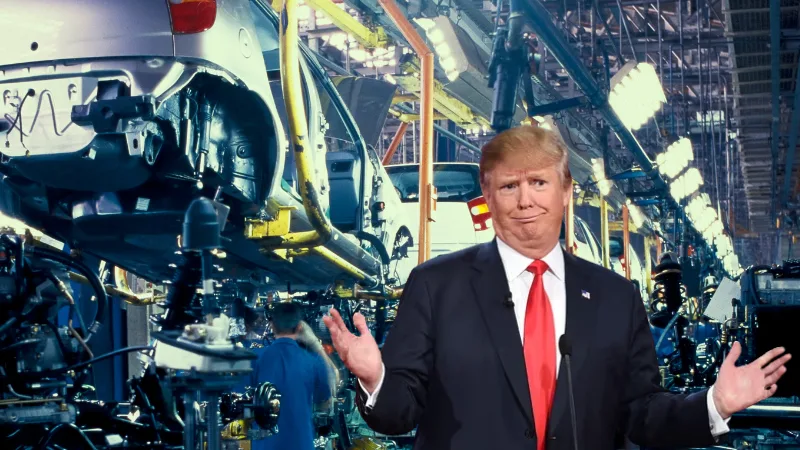Apple stock surged. Chipmakers soared. But is the market rally built on shaky ground? Here’s what investors need to know.
In a surprise move that sent shockwaves through the global financial markets, President Donald Trump announced a temporary rollback on some of the steep tariffs targeting consumer technology products. The pause ignited a surge in tech stocks, breathing fresh life into an otherwise jittery market. However, the celebration may be premature. Behind the scenes, the administration is preparing a new wave of targeted levies that could soon hit the tech industry again — this time with more precision.
Tech Stocks Lead Rally as Tariff Exemptions Announced
U.S. equities jumped at the opening bell Monday, with the Nasdaq Composite leading the charge, climbing more than 2% in early trading. Shares of tech giants like Apple (AAPL) and Dell Technologies (DELL) soared as news broke that smartphones, laptops, memory chips, and other hardware components manufactured in China would temporarily avoid the newly imposed tariffs.
This development follows a volatile month on Wall Street. Just two weeks ago, Trump unveiled a sweeping tariff plan that threatened to upend global supply chains and sent markets reeling. Now, with this partial reprieve, investors are seizing the opportunity to re-enter the market — particularly in the hard-hit tech sector.
Among the biggest winners was Apple, whose stock jumped over 3% on Monday. With much of its product assembly taking place in China, Apple was seen as one of the companies most vulnerable to the tariff onslaught. Semiconductor stocks also rallied, with Nvidia (NVDA) and Micron Technology (MU) each gaining ground.
Global Markets React Positively — For Now
The rally wasn’t confined to the U.S. On the other side of the Pacific, Asian markets responded enthusiastically. Japan’s Nikkei 225 rose by 1.2%, while South Korea’s KOSPI Index gained 1.1%, buoyed by the strength of chipmakers like Samsung and SK Hynix. Meanwhile, Hong Kong’s Hang Seng Index surged 2.4% in one of its best days in months.
European markets followed suit, with Germany’s DAX and France’s CAC 40 both finishing higher, helped by gains in Infineon Technologies and STMicroelectronics, two major European semiconductor firms.
The rally highlighted just how intertwined global equity performance has become with U.S. trade policy — and how sensitive investors remain to headlines out of Washington.
“Nobody Is Off the Hook,” Trump Warns
While investors were busy celebrating, President Trump took to social media to issue a warning: “NOBODY is getting ‘off the hook’” when it comes to tariffs.
Indeed, Commerce Secretary Howard Lutnick reinforced this message over the weekend, noting that while smartphones and computers are temporarily spared, other tech products — particularly semiconductors — remain under scrutiny.
These could face new duties in a matter of weeks under the Section 232 trade law, a provision that allows the president to impose tariffs on goods deemed critical to national security. Originally intended for industries like steel and aluminum, Section 232 is now being weaponized to investigate and potentially penalize the semiconductor sector, citing supply chain vulnerabilities and foreign dependence.
This pivot suggests a shift in strategy: rather than blanket tariffs, the administration may now pursue targeted, sector-specific levies designed to pressure China while minimizing consumer blowback at home.
The Economic Outlook Is Dimming
Despite Monday’s rally, storm clouds continue to gather over the broader economic landscape. A new survey by the Wall Street Journal revealed that economists have sharply downgraded their growth expectations following Trump’s April 2 announcement of aggressive reciprocal tariffs.
The survey now shows a 45% chance of a U.S. recession within the next 12 months, nearly double what economists projected just three months ago.
Adding to the concern, billionaire hedge fund manager Ray Dalio warned that the U.S. economy is flirting with contraction, citing rising interest rates, persistent inflation, and declining global demand. “We’re closer to the edge than people realize,” Dalio said in an interview this week.
The Dollar Rebounds, Treasury Yields Fall
After suffering its biggest weekly drop since 2022, the U.S. dollar regained modest ground Monday. While investors initially fled to safety amid tariff fears, the partial tariff rollback helped stabilize currency markets. The DXY index, which tracks the dollar against a basket of major currencies, rose slightly, though it remains well below its early March highs.
Meanwhile, benchmark 10-year Treasury yields fell, reflecting continued demand for safe-haven assets. Falling yields are typically associated with growing investor unease about future economic growth.
China’s Last Export Surge Before the Storm?
Ironically, while the U.S. contemplates new levies, China’s export machine is still humming — for now. Chinese exports surged last month, in what analysts believe could be a “last hurrah” before the full brunt of U.S. tariffs takes effect.
Beijing is not sitting idle. Chinese President Xi Jinping embarked Monday on a strategic tour of Southeast Asia, aiming to bolster trade relations with countries like Vietnam, Indonesia, and Malaysia. The trip is widely seen as an effort to diversify China’s trade exposure and minimize damage from escalating tensions with the United States.
What This Means for Investors
For market participants, this latest tariff maneuvering presents both risk and opportunity. On one hand, the tariff reprieve has breathed life back into tech stocks, offering a window for gains. On the other, the temporary nature of the exemptions and the looming threat of Section 232 tariffs mean that volatility is here to stay.
Here are a few key takeaways for investors navigating this uncertain terrain:
1. Short-Term Gains May Be Fleeting
The market loves good news — even if it’s temporary. But investors should be wary of betting on a sustained rally until there’s greater clarity on Trump’s long-term trade strategy. This week’s gains could be reversed quickly if new tariffs are announced.
2. Focus on Diversified Tech Plays
Companies with less exposure to China-based manufacturing — or those with the flexibility to shift supply chains — may be better positioned in the months ahead. Investors might consider tech firms with global operations or strong domestic production capacity.
3. Semiconductor Stocks Face New Risks
The Section 232 investigation into semiconductors is a wildcard. If tariffs are imposed on imported chips, companies like Nvidia, Intel, and AMD could face rising costs or supply chain disruptions. Keep a close eye on regulatory developments.
4. Watch China’s Response
China has yet to formally retaliate against the latest round of tariff threats, but don’t expect them to stay quiet. Any escalation could further rattle markets and undermine fragile investor confidence.
Relief Rally or False Start?
The market’s Monday surge provided a welcome reprieve for tech investors, many of whom had been battered by the past month’s tariff-driven volatility. But seasoned analysts are quick to remind us that this may only be a tactical pause in a longer, more grueling trade conflict.
President Trump has made it clear that trade — particularly with China — will remain a central theme of his administration’s economic agenda. Whether this week’s rally is the start of a comeback or just a head fake before the next downturn remains to be seen.
For now, the only certainty is uncertainty — and in today’s market, that means staying nimble, informed, and focused on the fundamentals.





